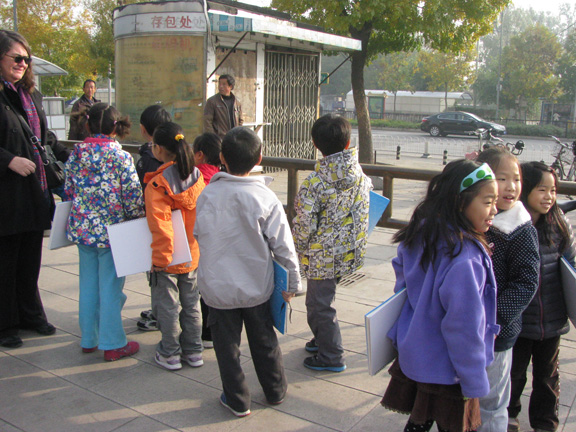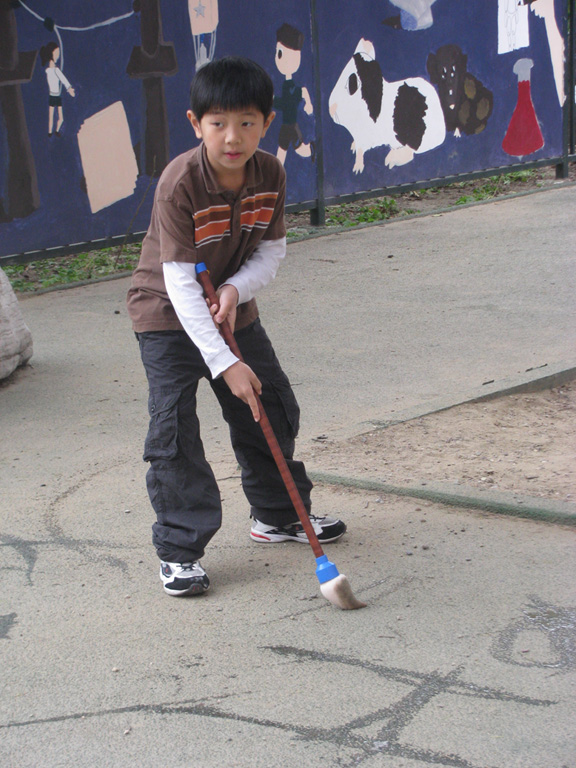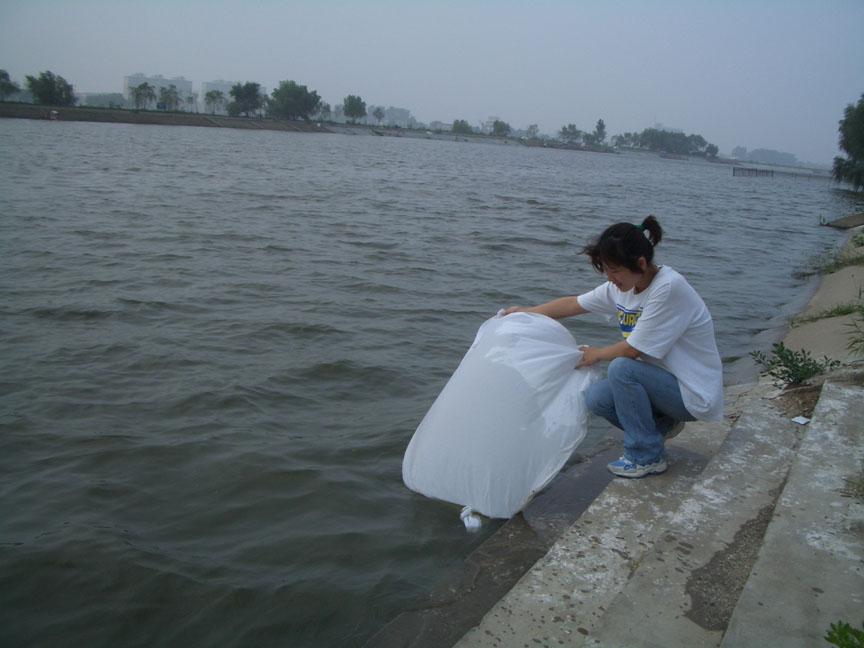Yellow River, Puyang, China
We describe the Yellow River as mother river, for it was from there Chinese people emerged and started our culture. It was sad to see it having various environmental issues. But at the same time when I went there and dipped the cloth into the water, I felt that I was facing something greater. I arrived there around dusk. There was a huge fog. Everything was pretty much grey except the sun, which was setting above the river. The sheep were starting to go home. While we waited for the cloth to dry we watched the country going dark and quiet. It was quite a magical moment. – Artist, Yu Su.
















































































































